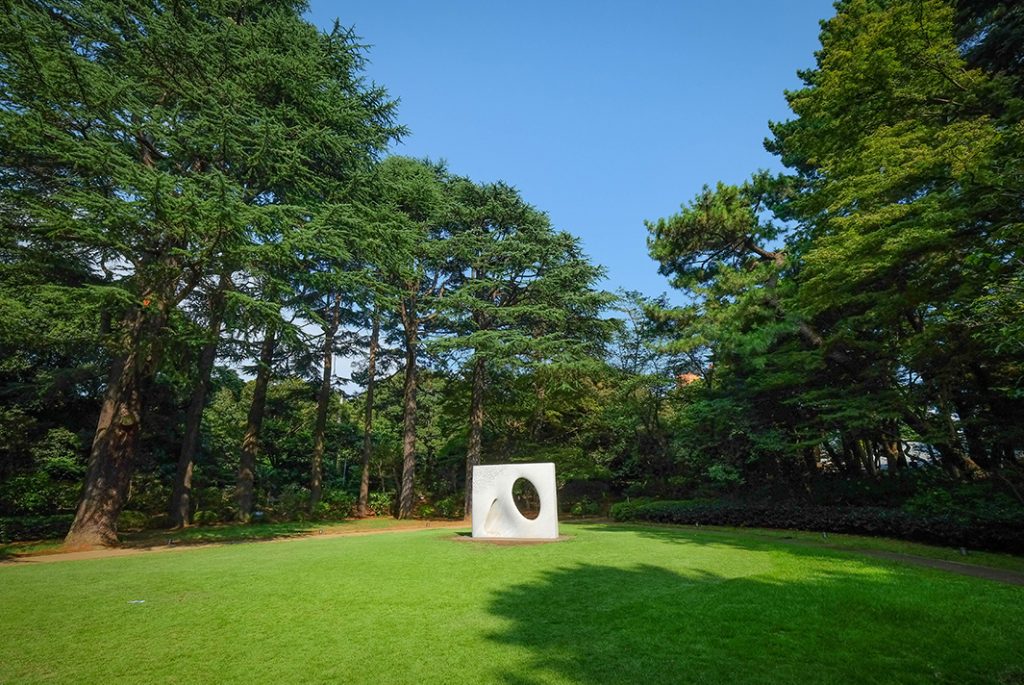Fan of Art Deco? Nature lover? Want to tread in the footsteps of royalty? You’ll love the Tokyo Metropolitan Teien Art Museum and Institute for Nature Study. Even better, both are just steps from Tokyo’s bustling Meguro station. The Teien Art Museum (which once served as Prince Asaka’s residence) is nestled along the outer edge of the Institute for Nature Study’s forests. Meanwhile, the Institute (which once served as the Prince’s estate) is a sprawling complex, encompassing marshlands, medieval ruins, and botanical gardens, in addition to its ancient forests. Since they’re so close together, it’s possible to visit both in a single afternoon. While the Tein explores the refinement of man-made art, the Institute honours the artistry of the natural world, giving you a unique opportunity to explore the contrast between the two.

What is Art Deco? Why visit the Teien Art Museum?
Rising out of France in the 20s, Art Deco rejected the soft, nature-inspired motifs of its predecessor, Art Nouveau. Rather, Art Deco aspired toward clean lines and geometric shapes. Driven by the heady industrial success of the roaring 20s, its themes also echo a Western fascination with the Far and Middle East. The Teien residence was designed by French artist Henri Rapin and Japanese architect Gondo Yokichi and completed in 1933. Picture Gatsby’s mansion, and you’ll imagine something similar to its strong lines and luxe details. After completion, it served initially as Prince Asaka’s residence and later as a residence for Japanese Prime Ministers. Finally, in 1983 it opened to the public as the Tokyo Metropolitan Teien Art Museum.
While staff strive to preserve the building’s interior and décor, the museum’s exhibitions are frequently in flux. A list of planned and current exhibitions is provided here. Additionally, for a small additional fee, visitors can wander through the statues and art installations scatted across the museum’s Japanese and European gardens. If you’d like to rest here a little longer, there’s a cosy tea house tucked into the Japanese garden.
What is an Institute for Nature Study?
The green space surrounding the museum (and extending much further back) is a mecca for hobbyist painters, groups of Japanese schoolchildren, and nature enthusiasts of all walks. It has served many purposes over the years: farmland, temple grounds, and even a gunpowder reserve. However, the Institute’s lands joined the ranks of the imperial family’s private forests in 1917. Later, in 1949, they switched over to the Ministry of Education’s hands and opened to the public as a way to encourage nature study. In 1962, it assumed its current mouthful of a title: the Institute for Nature Study of the Natural Museum of Nature and Science.
The Great Serpent Pine Some Friendly Residents
Where to go
While certainly a pleasant place for an aimless stroll, there are also some key sights to take in at the Institute for Nature Study. At the entrance, visitors will find an education building with information about the local flora, fauna, and history. From there, seek out the ruins of a medieval nobleman’s villa in the forest. Then, marvel at the “Great Serpent Pine”, a towering 300-year-old pine. Deeper in, the Mizudori Marsh is a stunning example of Japanese marshland and excellent heron-watching spot. Finally, stroll around the Robo and Suisei botanical gardens, which showcase local seasonal plants. If the weather is nice, you’ll likely see some painters with their easels set up along the Institute for Nature Study’s pathways.
Taken together, the Museum and Institute provide a lovely afternoon in which to honour both the allure of man-made art and artistry of the natural world. This kind of duality, and the striking beauty that rises out of the contrast between the two, is a hallmark of Tokyo. In the city, one might find a demure noodle shop practising centuries-old techniques next to a riotous arcade. On the latest of high-tech, high-speed trains, you might sit next to a woman carefully adorned in kimono and geta. You might discover, say, an ancient green space and ex-prince’s residence turned art museum in the middle of a bustling, modern district. This contrast between nature and technology, tradition and modernity, is what makes Tokyo a top destination for so many tourists. When you visit, take some time to drop by Meguro Station and explore the beauty of this particular contrast yourself.
Name: Tokyo Metropolitan Teien Art Museum
Website: https://www.teien-art-museum.ne.jp/en/
Name: Tokyo Institute for Nature Study
Website: http://www.ins.kahaku.go.jp/english/index.php
Post by Japan Journeys